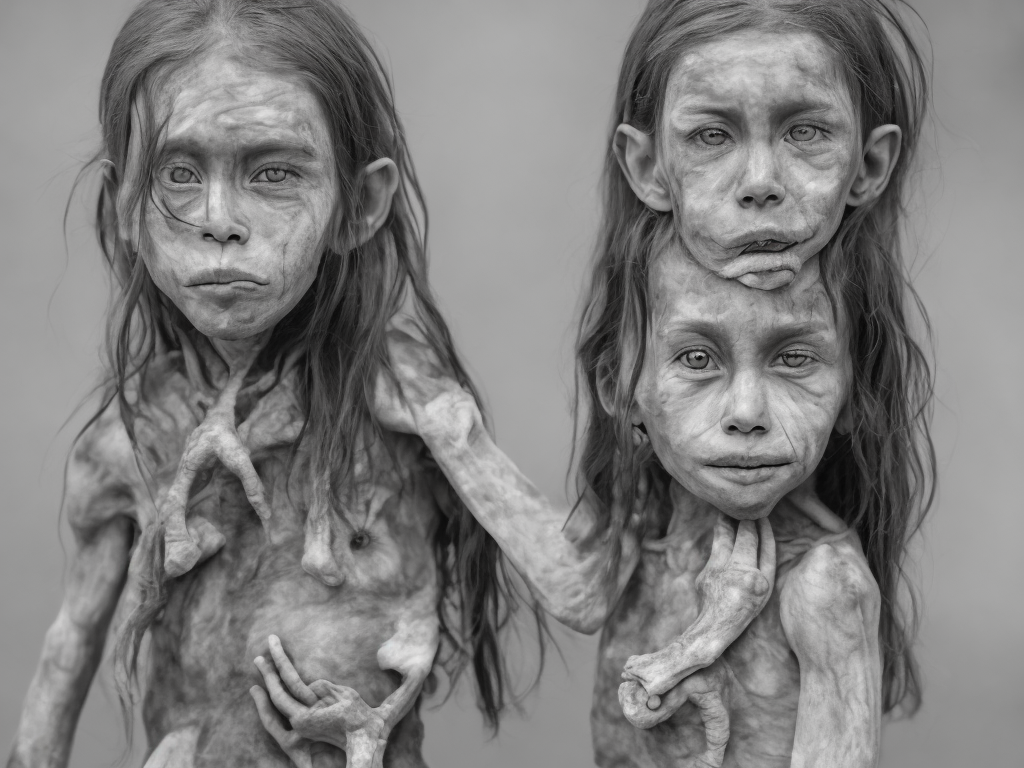
Kwashiorkor and marasmus are two forms of undernutrition prevalent in developing countries. The United Nations estimates that malnutrition affects one in three people globally. Kwashiorkor and marasmus are different types of malnutrition, and it is crucial to understand the difference between the two to create effective interventions that will address these health concerns. In this article, we will explain the difference between kwashiorkor and marasmus.
Kwashiorkor and marasmus are a result of inadequate nutrient intake, leading to undernourishment and, in severe cases, death. However, despite sharing some similarities as forms of undernutrition, Kwashiorkor and marasmus differ in several ways, including the causes, onset, symptoms, and treatment.
Kwashiorkor is a severe form of undernutrition that typically affects children under the age of five. The condition can occur when a child receives a diet that is deficient in protein and rich in carbohydrates. Unlike marasmus, which involves overall undernutrition with wasting of muscle and fat tissue, kwashiorkor is characterized by a swollen belly and limbs. It is further distinguished from marasmus by the presence of edema, which is swelling caused by the accumulation of fluid in the body or tissues. Kwashiorkor is usually caused by a lack of protein in the diet, resulting in a deficiency of amino acids, which are essential for proper growth and development.
Marasmus is a severe form of undernutrition where the body expends its fat reserves and muscle tissue for energy. It is common in infants and young children under the age of two. Marasmus results from a diet that is severely deficient in proteins, carbohydrates, and fat. Children with marasmus have a wasted appearance, with bones and muscles visible beneath the skin due to malnourishment. Unlike kwashiorkor, there is no accumulation of fluid, and children with marasmus have no swelling.
The onset of kwashiorkor and marasmus is also different. Kwashiorkor usually occurs when an infant is weaned onto a low-protein diet. In contrast, marasmus is usually the result of a long-term inadequate diet. Children who have experienced marasmus for an extended period of time may develop kwashiorkor if they are given a diet rich in protein too quickly.
Symptoms of kwashiorkor and marasmus also differ. In kwashiorkor, the swollen belly and limbs are the most striking symptoms. However, the affected individuals may also appear to be smaller and less developed despite their age. Their skin becomes flaky, and their hair turns red and brittle, and they may suffer from apathy, diarrhea and anemia. In comparison, the symptoms of marasmus include a shrunken appearance, skin that is dry and thin, and hair that is scanty and breaks easily. Children with marasmus tend to be irritable or have a reduced awareness of their environment.
Despite these differences, both kwashiorkor and marasmus can lead to complications if left untreated. Long-term complications of malnutrition include stunted growth and cognitive impairment, and both conditions are associated with an increased risk of death.
To treat kwashiorkor or marasmus, intervention is necessary. The aim is to provide the child with adequate nutrients to restore their health, but the treatment approach varies depending on the condition.
In treating kwashiorkor, the priority is to restore balance to the protein intake of the child. This is often achieved through a balanced diet, including foods rich in protein such as meat, eggs, beans and fish. A change in diet must be coupled with medications to control excessive fluid retention so that the accumulation of fluid in the body can be controlled. Children with kwashiorkor often need medical attention for several weeks, and the process may require hospitalization.
Marasmus treatment programs require a more long-term approach. A gradual increase in the child's calorie intake is needed. Caretakers must always note that a rapid increase may cause refeeding syndrome, a life-threatening condition that may kill the child. A gradual increase is essential to avoid overloading the child's metabolic machinery, which may be unprepared for such a sudden surge in nutrients. Smaller, more frequent meals with nutrient-dense foods such as milk, cheese, and bone broth, protein powders such as medihoney or whey and multivitamins containing sufficient fat, carbohydrate, and proteins are recommended to achieve safe recovery.
In conclusion, kwashiorkor and marasmus are two different forms of undernutrition prevalent in developing countries. Kwashiorkor is characterized by a swelling of the belly and limbs due to fluid accumulation caused by a lack of protein in the diet, while marasmus is characterized by wasting of muscle and fat tissue. The onset, symptoms, and treatment approach of the two conditions are different, but both require prompt and sustained action to treat effectively. It is essential to recognize the signs and symptoms of these conditions and provide intervention as soon as possible to prevent long-term complications from developing. Education about adequate nutrional intake is key in the fight against undernutrition. Assistance from donor agencies such as the World Food Programme, UNICEF and agencies in the UN system can also help to combat and eradicate malnutrition in developing countries.
 Self-Instruct
Self-Instruct